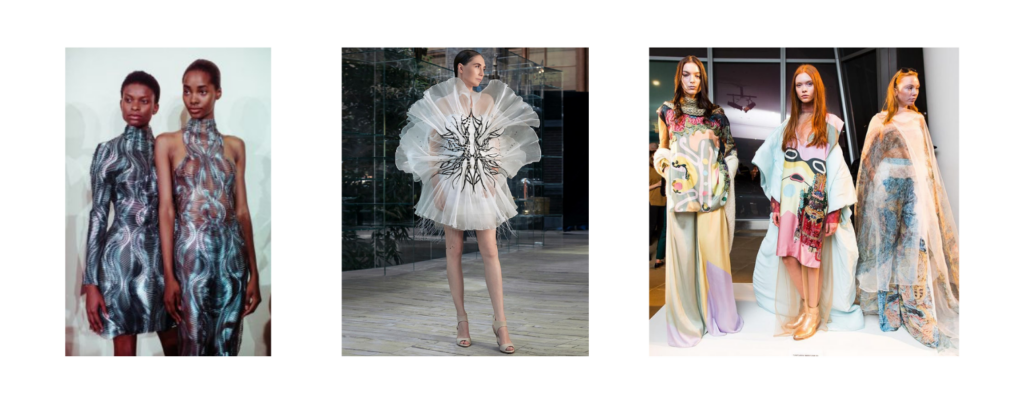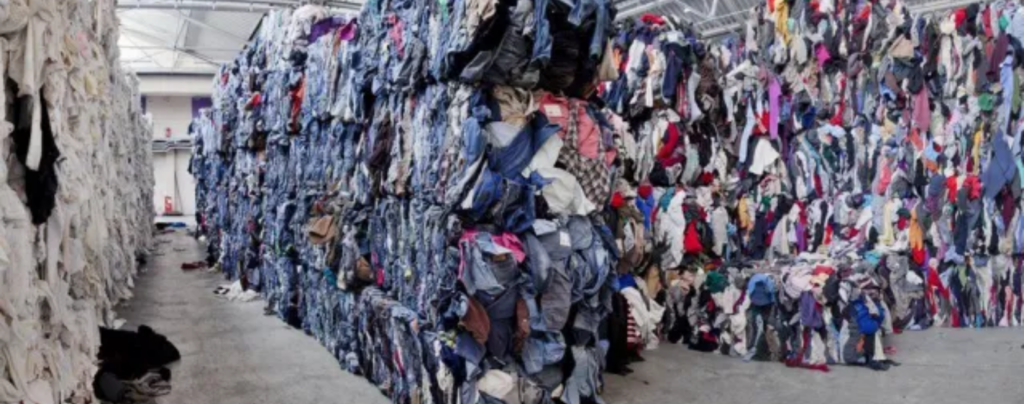We use cookies to improve your experience. By continuing to use this website you agree to our cookie policy.
Virtual fashion is one of the biggest rising trends in the fashion industry today, allowing designers to introduce their audience to whole new escapist worlds that nurture and inspire creativity and imagination. But with fashion proving to be one of the biggest detriments to the environment, how well does digital couture fare by comparison?

What is Digital Couture?
Digital couture, once the stuff of science fiction, is now a reality. Users can buy clothes online that can only be worn digitally, similar to how the gaming industry utilizes ‘skins’ – in-game fashion for players’ avatars. This has been proven popular by brands operating NFT collections.
Fabricant is the world’s first digital fashion house dedicated purely to providing clothes that don’t exist in the physical world. The company has set for itself to find a sustainable way to enjoy fashion and be inspired by it. Their first digital-only dress, called Iridescence, was created in partnership with DapperLabs. They have spoken at length about how they want their clothes to be connected to the wearer’s identity and explore how virtual clothes can portray individuality.
Digital enhancements have long been a part of social media and the online world. Just take a look at Snapchat and Instagram’s myriad of filters. Digital couture is simply taking it one step further, allowing users to express themselves in a whole new way. With the entire process from conception through design to the final product, digital fashion opens up a new range of possibilities. It takes significant strides towards progressing the fashion industry along the path of sustainability.

Traditional fashion isn’t going anywhere, seeing as digital clothes can’t yet be worn in the physical world. Still, more and more people worldwide are becoming conscious about the effect several industries are having on the environment, and digital couture is presenting itself as a viable option for helping people become more eco-friendly.
The Sustainability Benefits of Digital Fashion
Of course, the digital world leaves a carbon footprint just like physical industries do. Still, it does a lot less harm in specific ways that makes digital fashion a much more eco-conscious and attractive option to those who have a passion for blogging and influencing trending fashion on social media. As of January 2021, Statista showed that there were 4.66 billion people on the internet, 4.32 billion on the mobile internet, 4.2 billion on social media and 4.15 billion accessing social media through their phones. That is a huge potential market for digital couture to make its mark on and thus marks a vast potential for the world to become more eco-friendly.
Fast Fashion
In recent years, fast fashion has been all the rage with people buying outfits and only keeping them for a short while before buying new clothes. This has led to an increase in shipping and clothing production. It takes 683 litres of water to make a shirt, and clothes production is one of the leading causes of carbon emissions. Natural resources are being exploited for fashion, leading to a tremendous amount of waste.

Digital fashion is a great starting point to cut down on resource use and reduce waste. So many social media users buy outfits to display in a few pictures on their channel and then hardly wear the clothes again. It also decreased return rates, a highly wasteful process, as well as shipping costs too. Overall, it enables them to try on clothes before buying with digital couture; they can buy these one-and-done outfits without environmental impacts. No copious amounts of water are used, no shipping is needed, and there’s a reduced amount of waste.
It’s a fast and sustainable way to find the new best fashion for their followers to admire, and the clothes are still as attractive as they would be if they were made of cotton and fibre instead of bytes and pixels. The Fabricant put it best when they said, “fashion should waste nothing but data and exploit nothing but the imagination.”
Greenhouse Gas Emissions
As a rule of thumb, the fashion industry involves a lot of travelling. Buyers travel to the shops; retailers travel to work; designers and models go to and from studios; delivery trucks take clothes to peoples’ houses. Even without the impact of shipping clothes or the act of making them, the fashion industry is releasing unimaginable levels of pollution into the atmosphere.
Digital fashion ensures less energy consumption and less carbon and other toxic emissions being produced in the environment. There is no need to travel when all the clothes are instantly available to users at the click of a button. This helps to reduce the carbon footprint significantly. A typical car, on average, produces about 4.6 metric tons of carbon dioxide, while the production of a t-shirt produces 7.8kg of carbon dioxide. In comparison, a digital t-shirt has only 0.26 kilograms of CO2.
This is undeniable proof of the benefits of digital couture. Of course, it doesn’t completely solve the fashion industry’s problems, but it does go a long way to kickstart businesses and users into making an impact.
Reducing Use of Natural Resources
The synthetic fibres used by the fashion industry to make clothes such as polyester and nylon are produced using fossil fuels, making them a lot more harmful to the environment than using natural materials like wool and cotton. Many textile factories primarily run on coal and water and produce a lot of waste that causes pollution. Add to that the oil used up in shipping and delivery, and you’ve got yourself an industry that is well on its way to making a severe dent in the limited resources the environment has to offer.
Digital couture circumvents most of these problems – through digital devices producing viable options for helping people remove harmful emissions from their products, it is nowhere near as drastic as all the elements of the fashion industry put together. Without the need for synthetic or natural fibres, users can enjoy browsing, selecting and displaying their clothes without having to worry about how much water has been used up in cotton (up to 20,000 litres for 1kg).
There is no need for textile factories either as the production of clothes happens in a purely virtual space, which means less coal is also being used. By being able to carry out the entire fashion process digitally, there are vast reductions in the consumption of natural resources, increasing the sustainability of fashion and helping the industry to become more socially conscious and eco-friendly while also making the digital fashion industry a more appealing and attractive choice for those passionate about the field.
Ethical Production of Clothes
Due to the high demand for clothes and the broad scope of the fashion industry, it only makes sense that there is a vast amount of labour. There have been many concerns about workers being forced to do too much, working longer hours than they should. This issue is being raised in many industries, including the gaming industry, where companies go into ‘crunch’ mode to finish off games and deliver them. The same holds for fashion, with workers often in unethical situations and poor working conditions. Harmful regulations sometimes fail to protect workers, and workers in Second and Third World countries are usually paid below the minimum wage.
Making the fashion industry digital solves some of the ethical problems. Digital fashion doesn’t take advantage of or exploit workers as large production groups aren’t needed to bring the clothes to fruition. This helps ease the stress, and pressure labourers are put under and make digital clothes ethically beneficial. It helps to lower accidents in the workplace and ultimately makes fashion into a happier and healthier environment.
Fewer workers in factories mean less pollution and less toxic emissions from driving, serving to enhance the digital experience and helping to raise awareness amongst consumers as to the problems concerning the industry’s ethics.

Accessibility of Digital Couture
Digital couture is, right now, very much a rich person’s game. There are, of course, experiences available for free for social media and other online websites that allow users to try products for free such as AR Try On. But the digital industry does have a sizable paywall right now. The Fabricant’s digital dress, Iridescence, for example, sold for $9,500. Not exactly a price anyone in the world could afford.
By making digital couture more accessible to the masses in various ways, businesses will ensure that their digital options make more of a significant splash and start trying. More affordable mainstream options will encourage more people to gravitate towards digital fashion and help to start making a broader impact on the industry’s sustainability.
Digital couture has excellent potential to make a lasting impact on the fashion industry, encouraging customers to go for a more sustainable option and reducing waste, pollution and the exploitative use of labourers and natural resources. Sustainable digital fashion is healthier, safer and far more progressive than other aspects of the industry. And suppose that’s not proof enough that digital fashion is a wiser choice than physical clothes in some instances. In that case, the garments are also attractive and well-made, promising users the same high quality with double the creativity and imagination.
